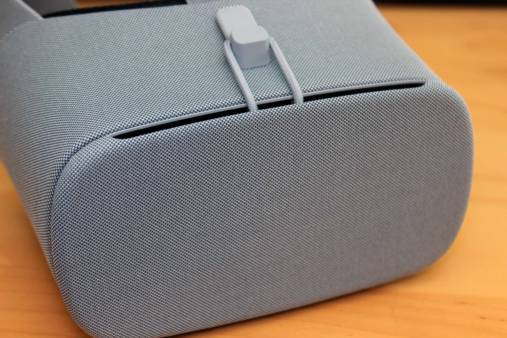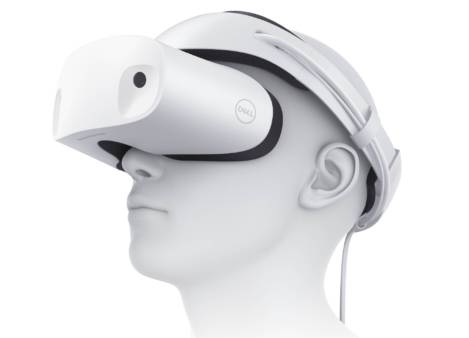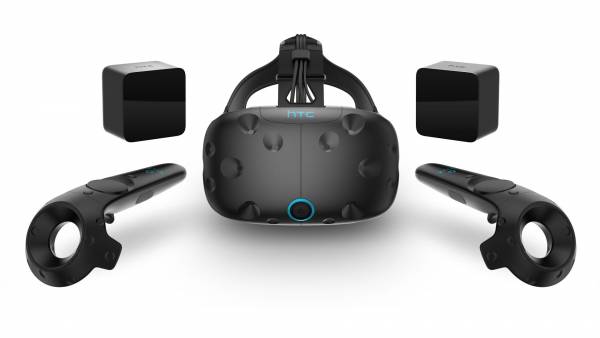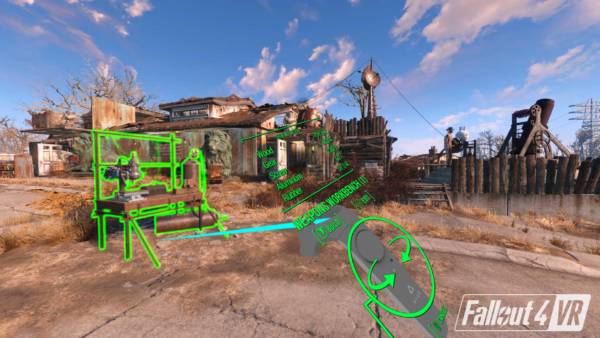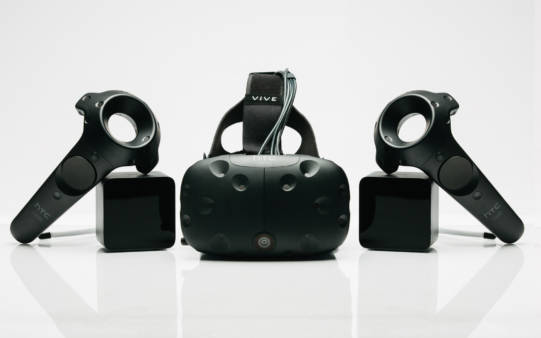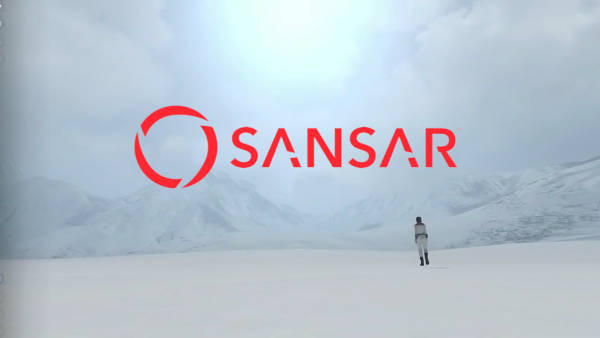EGX 2015, Thursday morning, 11:30am.
We met up with team over at HTC, who are looking after their inclusion into the virtual reality market, HTC Vive. Virtual reality is not a new technology, as companies have been trying to bring it to market as far back as 1968 with the Ultimate Display. Fast forward 47 years to 2015, and there are currently three big contenders trying to take the VR crown.
The HTC Vive is a head mounted display which is being co-developed by Valve, as part of a deal of it being designed for SteamVR. This will enable the device to quickly attach itself onto their massive PC game library with few complications.
At the event, the demo was taken in a booth on the show floor, which inside was an empty room complete with black walls and a couple of motion tracking cameras in the top corners. One of the first things we noticed was how small the SteamVR base stations are, and that there were only two of them. Our first thoughts were that it was pretty impressive if it can track accurately as you walk around the room. The HTC team started their preparation for the demo, which involved syncing the strange wand like controllers which come with the SteamVR by placing them in the centre of the room.
After this, it was time to get the headset on. Putting it on, the first thing that was noticeable was the weight. As a developer kit, you can forgive it for not worrying too much about the design, and over weight of the device as long as it worked. The design is a mix of the standard fair of VR headset coupled with many holes over the front. This houses the gyrosensor, accelerometer, and laser position sensors that are all used to track your head movements as accurately as possible. HTC made us aware that it is able to track movements of 1/10th of a degree, and as numbers go that sounds pretty impressive. The Vive is also able to connect any headset into the main body of the device, allowing you to use whatever one you wish for the audio. With the Vive and headset online, on it was time to enter the virtual world.
Initially, you are booted up into a white endless room that seems to go on forever. Even this was an impressive first start for the Vive, as the clarity of the imagery was fantastic. The clear and crisp visuals did not make it feel like you are staring at a computer screen, which is often just a couple inches away from your face. Coupled with the great visuals was the minute tracking detail, ensuring every slight movement was replecated into the VR space. The next step was grabbing the controllers, and being able to see some form of appendage in the world. After this, it was time to get walking.
Walking in a virtual environment is a strange one to begin with, as your hands are floating VR sticks and your legs are no where to be seen. The HTC Vive does well at trying to make this as easy to use as possible, which is helped by the high frame rate of 90FPS and what seemed to be perfect real world movement while walking around the room. My first mission was to find a console in the middle of the room, and from there the controller basics were explained along with Vive’s chaperone system. Without it, walking in the real world while being in the virtual one does produce some risk of smashing your face against the wall. The chaperone system allows you to tell the Vive how big the space is, and it provides a blue wall mesh as a guide when you get too close to a wall. For immersion, the grid only comes up when you are close. This is good call as it would be off-putting to see it in the distance of any games or worlds you are playing, providing you with a reminder of “Hey, remember you’re in VR”.
Next up were the demos with the first being the Blu by WEVR Labs. This sees you step below the surface of the ocean on a broken ship. Walking around, you are able to bat fish out of the way, and just explore the surroundings. Visually, the demo was amazing and even if you watch the video above you can get a sense of what it is like to stare directly into the eye of a giant whale that comes to see if you are friend or food.
Next up was a painting demo, which was called Tilt Brush. This was a fantastic use of VR in my opinion. Being able to draw in a 3D space which you can walk around was fascinating. Even better when you are able to add snow, fire, stars and many more animated effects to your virtual canvas. I could easily see myself losing hours just messing around painting, drawing the stars and planets combined with the option to change your environment. These can vary from day and night, to being out in space. For the commercial release of Tilt Brush, I hope they add many more environments and effects you can use. Imagine being able to draw your own log cabin in the mountains, or a lush green field. Holodeck here we come.
